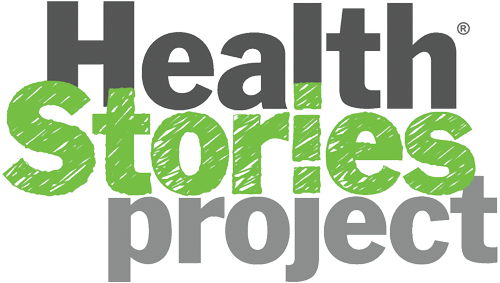Editor’s note: If you or a loved one are living with depression, bipolar, and/or thoughts of self harm the following post could be potentially triggering. If you are overwhelmed or in pain you can contact the Crisis Text Line by texting “HOME” to 741741.
Meet Jen…
Jen James knows exactly what it feels like to desperately need help. It’s been nearly 25 years since she tried to end her own life one night in college. Back then, she had nowhere to turn when her inner turmoil became overwhelming.
“I didn’t know there was support out there,” says James. “It was a dark time.”
To the thousands of volunteers, she helps oversee as the founding supervisor at Crisis Text Line, which uses text messaging as a 24/7 support system for young people in moments of mental-health need, it’s difficult to imagine James as anything less than effervescent. Bright and bubbly, with a penchant for colorful clothing and salty language, she gives off a positive vibe that’s practically infectious.
“This is a new vulnerable story I’m sharing,” says James, who recently received a BlogHer Courage Award for her post about being a survivor. She’s also the author behind a popular WebMD post, “The Day I Tried to Kill Myself.”
Following her suicide attempt, James was diagnosed with bipolar disorder, as well as anxiety and panic disorder. She began treatment through medication and therapy immediately. Suddenly, her confusing thoughts and behaviors made perfect sense. “I recognized how much it affected me before my diagnosis,” she says. “I started slowing down and thinking before getting myself into a jump-into-the-water-headfirst decision.”
Since then, she’s become an outspoken advocate for other people struggling with mental illness, both through her career and by sharing her own story of mental illness far and wide. “I know too many people who are suffering,” she says. “I want them to know that I’m a human — that this is part of me. You can live an optimal life with mental illness.”
After college, where she studied filmmaking, James got married and settled into life as a happy stay-at-home mom, where she put all her creative energy into raising two great kids (and a husky). After a while, though, she felt a call to do something more.
“I was always there for everyone,” she explains. “Then I recognized that I wanted to volunteer and make a difference, especially with teens. I got it. I knew this is what I was supposed to do. There was a void that nothing else could fill and this did.”
James started off volunteering at a local crisis center, Common Ground, where she took training classes. “I learned so much about myself,” she says. “It’s ridiculous how much I learned. Oh, there’s a name for that? That moment was wow. I was woke.” She pauses to laugh — a full-throated genuine laugh that puts you immediately at ease.
“It really helped me understand myself and how I survived,” she says.
Whatever you’re going through, they’re there
In 2013, James was invited to attend an advisory board meeting hosted by Nancy Lublin, the CEO of DoSomething.org (Lublin previously founded the worldwide charity Dress for Success). Lublin and her colleagues were looking for fresh ways to leverage the company’s mobile platform, which used text messaging to connect with young people — particularly teens — about various social causes. Through hard work and tenacity, James’ volunteering had led to a job at Common Ground, where she’d set up a chat text program for the staff.
“I walked into a room full of PhDs and then there was me,” says James. “But Nancy saw something in me. She knew that I was smart and knew what I was talking about.”
The inspiration behind the nonprofit Crisis Text Line, as Lublin discusses in her widely watched 2015 TED talk, was an anonymous text reply once received by staffers at Do Something. “He won’t stop raping me,” read the chilling message. “He told me not to tell anyone.” The next day the unknown texter followed up: “It’s my dad.” The staffers scrambled to respond with resources, but never heard back. Lublin saw a need.
“Nancy realized that kids don’t call,” says James. “I barely call. Even my voicemail message asks why are you calling not texting me. There’s a comfort level there.”
When Crisis Text Line launched in August 2013 as a small pilot program, James served as a liaison. She soon came on board full time to develop Crisis Text Line’s training program for remote volunteers. As a founding supervisor, she began with a group of 20 people. She now helps oversee more than 4,000 remote crisis counselors, as well as the supervisory team that monitors them. Crisis Text Line’s volunteers have exchanged more than 75 million text messages.
How it works
The whole concept is simple. If you’re having a moment of crisis and need help, you simply text a message to 741741 (in the U.S.) to get started. Crisis Text Line uses advanced algorithms to rank incoming messages in terms of priority, so the people most at risk get through right away. A small percentage of exchanges — maybe 15 to 20 a day — do end in active rescues, which involves contacting parents and/or emergency services when a texter appears to be at imminent risk (users agree to this in the terms of service at the beginning of the exchange).
Cutting-edge data science is among the MVPs at Crisis Text Line. Crisis Text Line provides all sorts of informative numbers at Crisis Trends, a data repository that’s used by journalists, researchers, school administrators, parents, and mental health professionals. Technology will never replace the human touch, though. Every single text is read by a person.
Who Uses Crisis Textline?
Most of the people who text in are 25 or under, which makes sense, as younger generations grew up texting, not talking on the phone. It’s also convenient for tweens and teens with busy schedules, who can only spare a few minutes between classes or before catching the bus. A quarter of texters are older than 25. Some people prefer texting because they have hearing problems or social anxiety. Others might not have anywhere they can talk without being heard, which is especially important in cases of domestic abuse. The whole process is confidential, and the texts don’t show up on a phone bill.
Volunteering for Crisis Text Line
Volunteers come from all walks of life. Any U.S. citizen over the age of 18 can apply. A background check is required, but other than that, the only job skills you really need are empathy, the ability to listen, and a willingness to commit to a weekly four-hour shift for a year. As James likes to mention often, you can work in your pajamas from home.
“We’re not here to give them therapy,” says James of the texters who reach out with problems ranging from fights with friends to suicidal thoughts. “We’re here to help them through a hot moment to a cool calm. We’re here to help them in their crisis.”
James based Crisis Textline’s initial training program on the training she received at Common Ground. Since then, the program has expanded considerably to accommodate the thousands of remote volunteers the Crisis Text Line team oversees. The rigorous training program includes videos, group chats, and weekly practice sessions with supervisors. It takes a lot of practice and skill to strike the right balance and keep the texts coming.
“The lessons they learn in training are life lessons,” James says of Crisis Text Line’s ever-growing team of volunteers. “They appreciate being able to give back to support someone and to have a better idea of what’s going on. For some people, like it did for me, it fills that hold. It fills that void.”
The communication techniques the volunteers learn are daily-use skills. James even uses them on her kids, though she has to get creative, as they’ve long since caught on. “They go away with so much, even when they’re no longer volunteering,” says James. “It’s a tool in their toolbox.”
“What we really have here is a community,” says James. “We’re so proud of our volunteers. We have our own social network. I’m the face of that, so I’m the one they always see, which is fun.”
It’s all the more reason she feels the need to be so open about her own struggles with mental illness. James, who is so vivacious her patronus is a unicorn, has known dark times.
“If you’re having a moment of crisis and not understanding what’s going on in your head, you are not alone,” she says. “With Crisis Text Line, you’re going to get an empathetic ear on the other line.”
James was diagnosed with an aggressive form of breast cancer. “It threw a big wrench in my life,” she says. “Things had been going really well for me. I was working for Crisis Text Line making a difference.” She tapped the techniques she’d learned in therapy and as a crisis volunteer to help her through the hard times. “I decided, nope, this isn’t going to kill me. I took a positive approach to it. I made fun of it. I made everyone comfortable to be around me.”
Of course, it’s OK to be sad and cry when you’re sick, she adds. “Just don’t dwell on that day after day. That’s where it will be hard to heal and find that positivity of wanting to live.”

